Steel structures are widely used in the construction industry. The processing of steel structures is very important to enterprises. There are many methods for cutting structural steel, but if you want to be efficient and have high precision requirements, it is relatively difficult. It’s complicated. The advent of laser cutting steel structure equipment helps improve production efficiency and save costs.
Laser cutting technology has had a profound impact in the field of structural steel manufacturing. Laser cutting of structural steel has become the preferred method for cutting and forming steel components with precision and efficiency.
This blog post delves into the fascinating world of structural steel laser cutting, where raw metal is carved into architectural marvels and industrial powerhouses at an unparalleled level of detail and speed.
What is Structural Steel
Steel structure is a structure composed of steel materials and is one of the main types of building structures. The structure is mainly composed of steel beams, steel columns, steel trusses and other components made of shaped steel and steel plates, and adopts rust removal and anti-rust processes such as silanization, pure manganese phosphating, washing and drying, and galvanizing.
In the steel framework, primary load-bearing elements like steel columns, beams, and frames carry the bulk of the structure’s weight and stress. Meanwhile, auxiliary elements like steel plates, brackets, and pallets provide essential connectivity, support, and stability. Typically, these parts are assembled using methods such as welding, bolting, or riveting.
Steel structure cutting method
Steel structures often need to be cut during processing. Flame cutting, plasma cutting, laser cutting and water cutting are all commonly used cutting methods.
| Cutting Method | Principle | Ventajas | Desventajas | Application Scope |
|---|---|---|---|---|
| Oxy-fuel Cutting | A thermal cutting method that breaks the multilayered oxide on the steel surface, reacting with iron oxide to release heat energy for cutting. Uses pure oxygen jet to oxidize and physically cut through the steel plate. | Fast speed, low cost. | Large heat-affected zone, low precision. | Suitable for steel plates thicker than 20mm. |
| Plasma Cutting | Uses high-frequency AC or DC electricity as the energy source, generating plasma for cutting. The high-temperature plasma energy cuts through the steel plate. | High cutting precision, smooth edges. | Slag may adhere to the surface. | Suitable for cutting steel plates with a thickness of 1-50mm. |
| Laser Cutting | A non-contact cutting method that uses a high-density laser beam to cut steel plates. Focuses a high-energy laser beam on a small area, melting or vaporizing it for cutting. | High precision, no heat-affected zone. | High equipment cost, limited thickness of steel plates. | Applicable for cutting various materials of steel plates between 1-30mm thickness. |
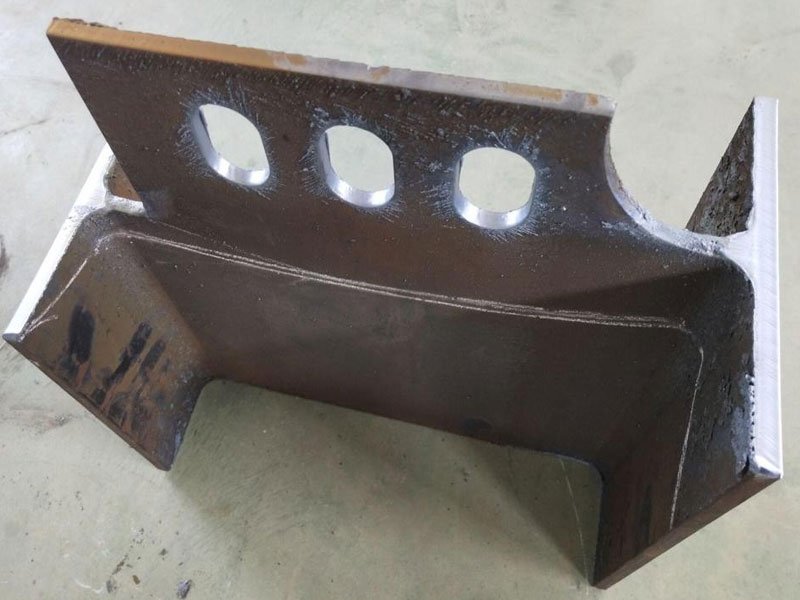
Develop of Laser Cutting Technology
Laser cutting technology has evolved significantly over the years. From its humble beginnings to its current state of the art, advances in laser cut steel technology have revolutionized various industries, especially in the field of structural steel manufacturing.
Early laser cutting was limited in speed and accuracy. However, with continued research and development, laser cut steel technology has made great strides in cutting accuracy, speed and versatility.
Advances in laser cut steel technology allow manufacturers to cut complex shapes and designs with unparalleled precision. This not only improves the quality of the structural steel components but also reduces production time, resulting in cost savings for the manufacturer.
The introduction of fiber steel laser cutting machine technology has further enhanced the capabilities of metal laser cutting machines, allowing for faster cutting speeds and greater energy efficiency. This makes laser cutting structural steel more cost-effective and environmentally friendly.
In addition, laser cutter has also evolved to include functions such as real-time monitoring, automatic nozzle replacement, and intelligent cutting path optimization. These advancements further increase the efficiency and productivity of laser cutters, making them an indispensable tool in the structural steel fabrication industry.
Principles of Laser Cutting for Structural Steel
The high-energy laser beam is irradiated on the metal surface to melt or vaporize the metal, and then the melted or vaporized metal is blown away with the help of auxiliary gas or its own pressure.
The open section laser cutting machine (three-dimensional five-axis laser cutting equipment) can cut angle steel, channel steel, H shaped steel, and realize drilling, marking, cutting, punching, milling and other processes. Whether it is cutting regular shapes or cutting curves, arcs and other complex shapes, laser cutting machines can accurately complete it, providing a more flexible processing method for steel structure manufacturing.
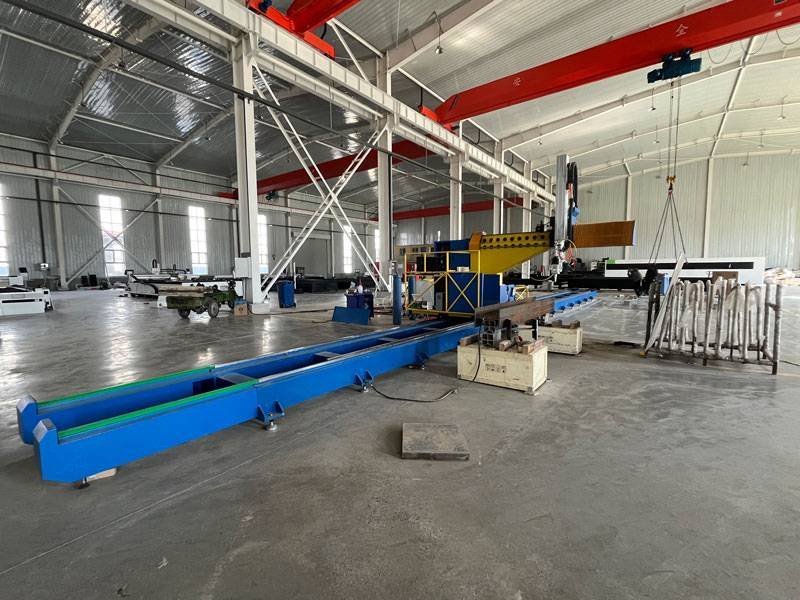
Functions of structural laser equipment cutting steel:
- Can handle materials up to 48 feet in length and 16 inches in diameter, and can cut materials up to 7/8 inches thick.
- From beveling to groove and tab cutting, and even the creation of precision holes, our state-of-the-art six-axis machines simplify manufacturing costs and increase productivity.
- Integrated drilling and tapping capabilities on state-of-the-art laser machines minimize the need for additional handling between machines, ultimately saving valuable time and resources.
Laser cutting in heavy structural metalwork
Laser cutting of heavy structural metal products enables precise cutting of complex designs, ensuring diversity in structural steel manufacturing.
Manufacturers can address material costs when dealing with heavy structural metal products and ensure production efficiency and results to accurately and quickly complete complex projects.
Application of metal laser cutting in light structural metalwork
The laser cutting process offers several advantages in the cutting of steel structures. By using a non-contact method, it minimizes the risk of damage to the material and provides high precision cuts. The intelligent control system allows for efficient and quick processing of the raw materials without the need for extensive manual intervention. Additionally, the versatility of the process allows for various operations such as cutting, drilling, and beveling to be performed in one step, streamlining the overall production process.
Light steel structures have gained popularity in various industries due to their versatility, durability, and efficiency. They are commonly used in general industry, agriculture, commercial construction, and both low and high-rise residential buildings. The adoption of light steel structures has revolutionized the construction industry by offering a cost-effective and sustainable solution for various construction needs.
Precision in Steel Sculpting: How Laser Cutting Works
Structural steel laser cutting machine requires precision and expertise. Involves using high-powered lasers to cut steel with unparalleled precision. Complex shapes and patterns can be created effortlessly by focusing the laser beam on specific points outlined in the design. This method ensures clean cuts without any distortion, making it ideal for complex steel engraving projects.
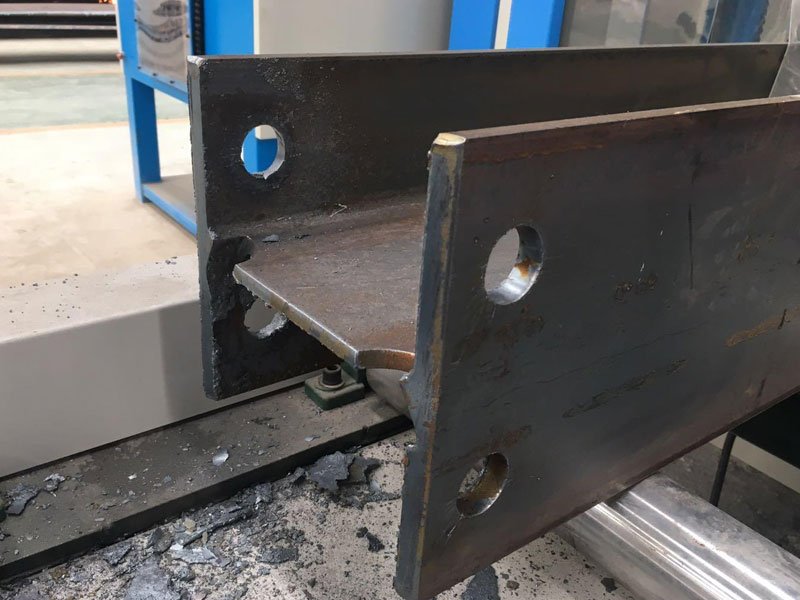
Advantages of Laser Cutting Structural Steel
- Exactitud: Ensures accurate cutting and tight tolerances, improving the overall quality of steel components. This method is highly efficient compared to traditional cutting techniques and greatly reduces material waste.
- Implement complex designs and patterns: Provide versatility in structural steel fabrication projects.
- The speed of laser cutting is unmatched, resulting in faster production turnaround times. The process is also highly customizable, making it easy to meet the requirements of specific projects.
- Saving time: After laser cutting, the need for extensive post-processing is eliminated, saving time and resources throughout the manufacturing process.
Structural steel laser cutting machine stands out for its accuracy, efficiency, versatility, and speed of manufacturing projects.
Precision and Accuracy: The Hallmarks of Laser Cut Structural Steel
Precision and accuracy are the defining features of laser-cut structural steel. When it comes to metal laser cutting structural steel these qualities are crucial for achieving impeccable results. The high-powered laser beams used in the process ensure intricate cuts with unparalleled precision, making it a preferred method for fabricating steel components.
Thanks to the advanced technology involved, laser cutting guarantees precision and accuracy in creating complex shapes and designs on structural steel. Engineers and manufacturers rely on this cutting edge technique to meet strict dimensional requirements and produce high quality steel structures. The hallmark of laser cut steel lies in its ability to deliver precise cuts and ensure accuracy in every project, proving its unmatched efficiency in the steel fabrication industry.
Efficiency and Cost-Effectiveness with Laser Cutting
Laser cut steel offers unparalleled precision and speed, revolutionizing the manufacturing industry. By harnessing the power of laser technology, companies can significantly enhance their efficiency and cost-effectiveness. The accuracy of laser cutting minimizes material waste, saving both time and money in production processes.
This comprehensive guide of laser cut steel delves into the various benefits and applications of this advanced technique. From intricate designs to large-scale production, laser cutting proves to be versatile and reliable. The seamless integration of laser technology ensures superior quality cuts, meeting the most demanding industry standards with ease.
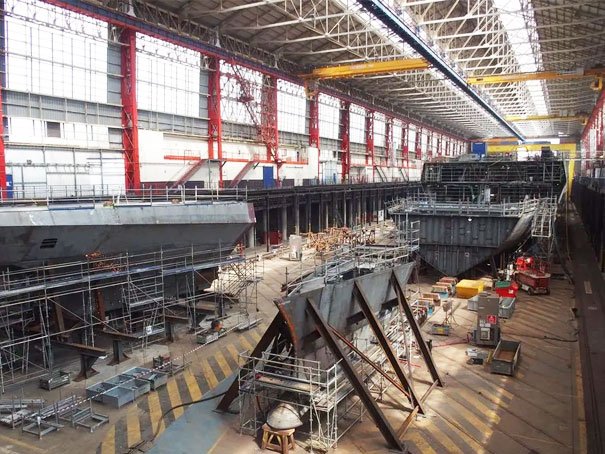
Applications of Laser Cut Structural Steel in Architecture and Construction
Building facade:
Laser cut structural steel can be used to create complex decorative facades for buildings. Precise cuts can incorporate unique patterns and designs into the facade, adding a visually appealing element to the building.
Stairs and railings:
Laser cut structural steel can be used to create custom stairs and railings for both interior and exterior use. The ability to cut complex shapes and patterns allows architects and designers to create artistic and functional elements for stairs and balustrades.
Signage and Branding:
Laser cut structural steel is often used to create signage and branding elements for buildings. Precise cuts allow company logos, names and other branding elements to be integrated into the steel structure, giving the building a unique and identifiable character.
Roof structure:
Laser cut structural steel can be used to create unique building roof structures. Precision cutting enables complex shapes and angles, allowing architects to design innovative and efficient roof structures.
Internal partitions and screens:
Laser cut structural steel can be used to create interior partitions and screens that are both functional and aesthetically pleasing. Intricate patterns and designs can be used to divide spaces, provide privacy, and enhance the overall design of interior spaces.
Furniture and decorative elements:
Laser-cut structural steel can also be used to create custom furniture and decorative elements for buildings. From tables and chairs to lighting fixtures and artwork, laser-cut steel adds a modern and sophisticated touch to indoor and outdoor spaces.
The precise cutting capabilities of laser-cut structural steel make it a versatile material for building and construction applications, allowing the creation of innovative and visually impactful elements in buildings.
The Intersection of Artistry and Engineering in Laser Cutting
Laser cutting technology can perfectly combine the art and engineering of structural steel, and can cut complex and perfect design graphics on metal steel, providing architects and designers with many possibilities, thereby breaking through traditional boundaries.
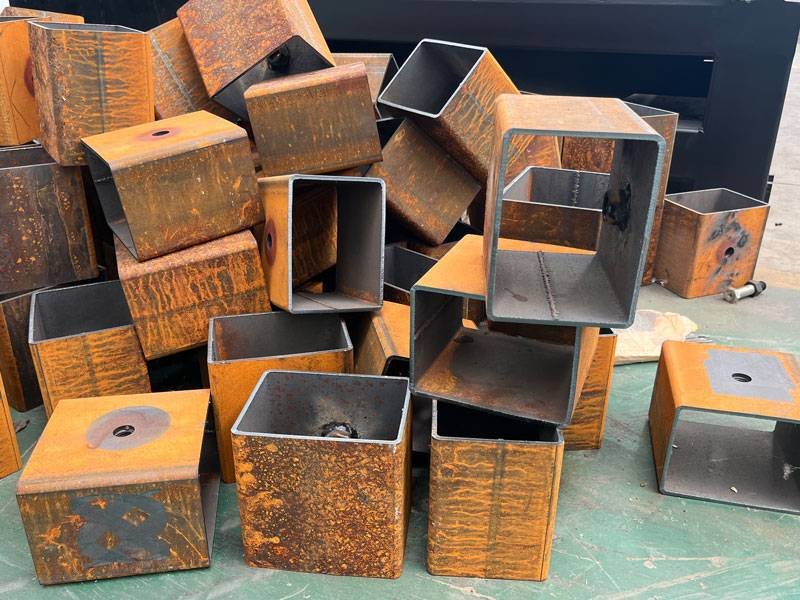
Quality Assurance and Safety Measures in Laser Cut Steel Production
To achieve the expected accuracy when laser cutting structural steel, quality assurance and safety measures are very important during the production process. Quality standards are strictly adhered to every step of the way, and quality controls are implemented to help maintain component integrity.
- Safety measures in laser-cut steel production are critical to protecting the equipment and laser operators.
- Personnel operating laser cutting machines must wear appropriate laser protective equipment, wear laser safety eyes and laser protective masks.
- Strictly following the laser cutting equipment operating instructions manual can prevent accidents and also help improve the overall efficiency of the production process.
Conclusión:
In the future, laser cutting technology will be widely used in structural steel manufacturing and production enterprises to improve production efficiency, from cost reduction to saving material loss. It will become a necessary CNC equipment in construction projects to meet your different needs for structural steel cutting.
